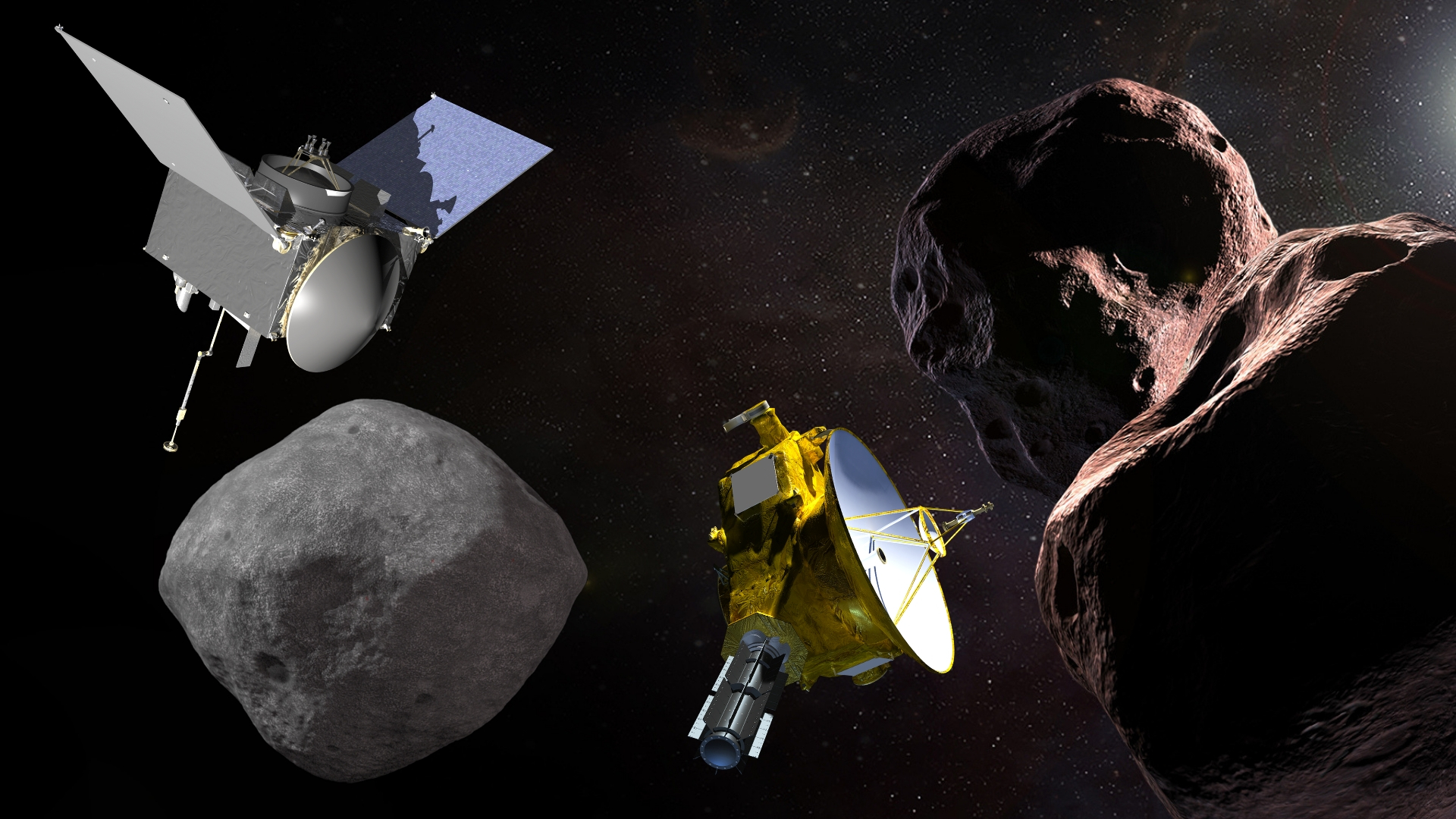
NASA will host a live Science Chat at 2 p.m. EST Wednesday, Nov. 7, to discuss upcoming encounters of two of the agency’s planetary missions – the arrival of the Origins, Spectral Interpretation, Resource Identification, Security-Regolith Explorer (OSIRIS-REx) at the asteroid Bennu, on Dec. 3, and New Horizons’ historic flyby of Kuiper Belt object 2014 MU69, on Jan. 1, 2019.
Topics will include the critical clues these objects hold to the formation of the solar system, complementary mission science goals and much more.
The event will air on Facebook Live, NASA Television, Ustream, YouTube and the agency’s website.
Participants include:
- Hal Weaver, New Horizons Project Scientist, Johns Hopkins Applied Physics Laboratory
- Melissa Morris, OSIRIS-REx Deputy Program Scientist, NASA Headquarters
Media may submit questions before and during the event by emailing JoAnna Wendel at joanna.r.wendel@nasa.gov. The public may ask questions on Twitter by using the hashtag #askNASA or by leaving a comment on the livestream of the event on the NASA Solar System page.
The OSIRIS-REx spacecraft will initiate an intricate dance with Bennu, mapping and studying it in preparation for sample collection in July 2020. OSIRIS-REx will deliver the sample to Earth in September 2023.
New Horizons will fly by its target, nicknamed Ultima Thule, approximately four billion miles from Earth – the farthest space probe flyby in history. This encounter complements the discoveries still coming from the mission’s July 2015 exploration of the Pluto system. However, this time, the spacecraft will come three times closer to Ultima than it did to Pluto.
For information about NASA’s New Horizons mission, visit:
https://www.nasa.gov/newhorizons
For more information about NASA’s OSIRIS-REx mission, visit:
https://www.nasa.gov/osiris-rex
-end-
Dwayne Brown / JoAnna Wendel
Headquarters, Washington
202-358-1726 / 202-358-1003
dwayne.c.brown@nasa.gov/ joanna.r.wendel@nasa.gov
Michael Buckley
Johns Hopkins University Applied Physics Laboratory, Laurel, Md.
240-228-7536
michael.buckley@jhuapl.edu
Nancy Jones
Goddard Space Flight Center, Greenbelt, Md.
301-286-0039
nancy.n.jones@nasa.gov
Erin Morton
University of Arizona, Tucson, Ariz.
520-269-2493
morton@orex.lpl.arizona.edu


























